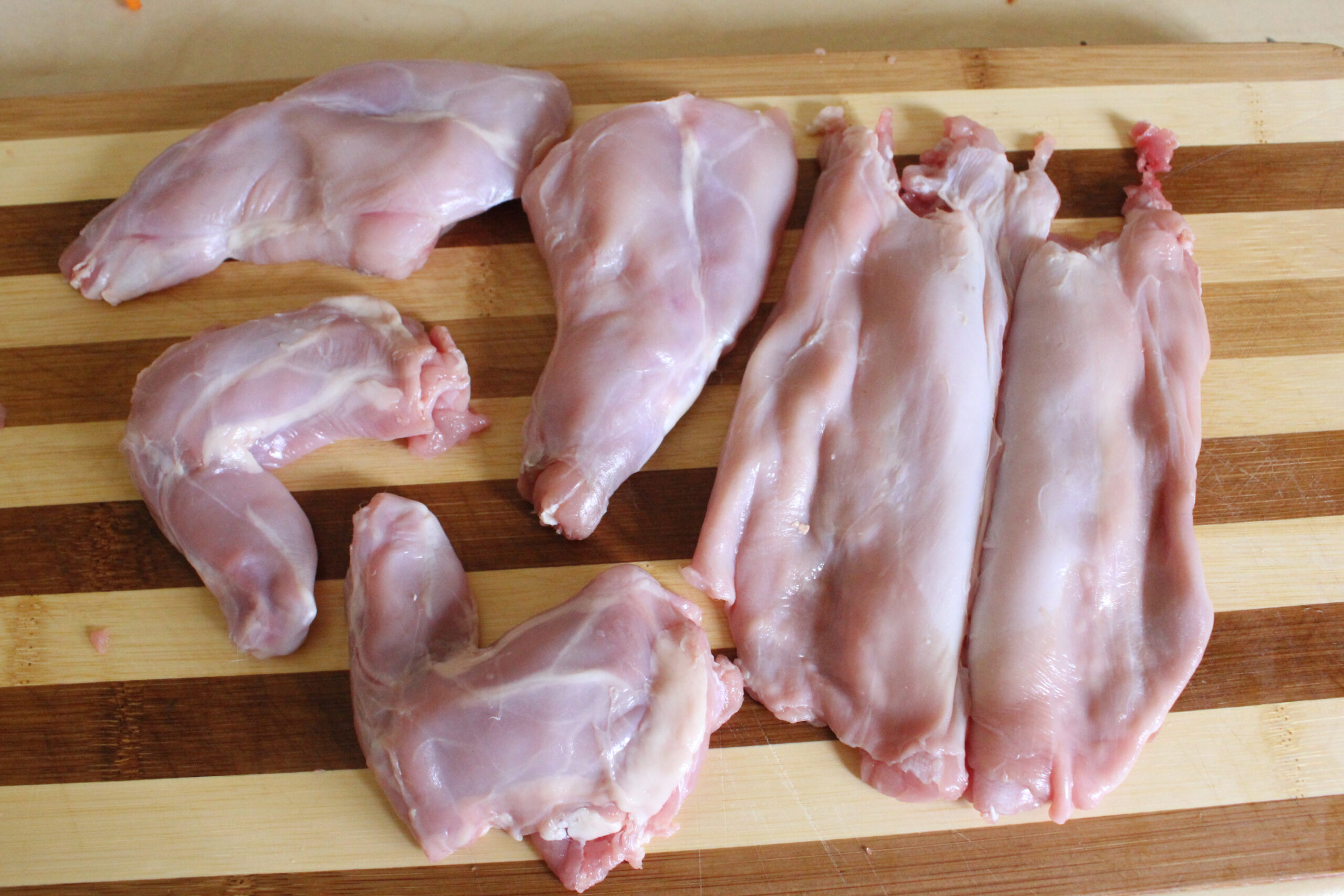How to Debone a Rabbit?
Deboning a rabbit is a skill that can come in handy for anyone who enjoys cooking and experimenting with different cuts of meat. While it may seem intimidating at first, with a little practice and guidance, you can become proficient in deboning a rabbit and create delicious dishes that showcase the unique flavors of this lean and tender meat. In this article, we will walk you through the step-by-step process of deboning a rabbit, including the tools you’ll need and some tips to ensure success.

Tools You’ll Need
Before you begin deboning a rabbit, it’s essential to gather the necessary tools to make the process easier and safer. Here are the items you’ll need:
- Sharp boning knife: A boning knife with a flexible blade is ideal for removing the bones from the rabbit without damaging the meat.
- Cutting board: Choose a sturdy and stable cutting board to provide a secure surface for working on.
- Kitchen shears: These scissors will help you easily trim any excess fat or connective tissue.
- Tweezers or pliers: Having tweezers or pliers on hand will allow you to remove any small bones that may break while deboning.
- Disposable gloves: Wearing disposable gloves is recommended for hygiene purposes and to ensure a firm grip while handling the rabbit.
The Step-by-Step Process
Now that you have your tools ready, let’s dive into the step-by-step process of deboning a rabbit:
- Prepare the rabbit: Begin by placing the rabbit on the cutting board with its back facing up. Ensure that it is properly cleaned and rinsed.
- Remove the hind legs: Using the boning knife, make a horizontal cut around the leg joint to separate it from the body. Apply gentle pressure to pop the joint out of its socket, then carefully cut through the remaining connective tissue to fully detach the leg. Repeat this step on the other side.
- Separate the saddle: Locate the backbone running along the center of the rabbit. Make a vertical incision on one side of the backbone, following its curvature. Slowly work your knife along the ribcage, keeping the blade close to the bones to remove the meat in one piece. Repeat this process on the other side of the backbone.
- Remove the front legs: Locate the front shoulder joint and make a horizontal cut around it to separate it from the body. Use your hands to break the joint apart, then cut through the remaining tissue to remove the front leg. Repeat this step on the other side.
- Trim excess fat and connective tissue: Use kitchen shears to carefully trim any excess fat or connective tissue from the deboned rabbit, ensuring a clean and neat presentation.
Tips for Success
Deboning a rabbit can be a delicate process, but with these tips, you’ll be on your way to success:
- Be patient and take your time: Rushing through the deboning process can lead to accidents and compromised results. It’s better to go slow and steady.
- Keep your knife sharp: A sharp boning knife will facilitate clean cuts and reduce the chances of slipping or tearing the meat.
- Practice proper knife handling: Always hold the knife with a secure grip and use controlled motions to ensure your safety and accuracy.
- Utilize tweezers or pliers: Small bones may break during the deboning process. Having tweezers or pliers handy will help you remove any fragments that remain in the meat.
- Consider saving the bones: Rabbit bones can be used to make flavorful stocks or broths. Store them in the freezer until you’re ready to use them.
FAQs
1. Can I debone a rabbit without a boning knife?
While it is possible to debone a rabbit with a different type of knife, using a boning knife is highly recommended. Its flexibility and sharpness make the process much easier and safer.
2. Is it necessary to wear gloves while deboning a rabbit?
Wearing disposable gloves is not mandatory, but it is advisable. Gloves provide a better grip on the rabbit and help maintain hygiene during the process.
3. Can I debone a rabbit if I’m a beginner cook?
Yes, deboning a rabbit is a skill that can be learned with practice. Start with a fresh rabbit and follow the step-by-step instructions carefully. With time, you’ll become more comfortable and efficient in the process.
4. What can I do with the deboned rabbit meat?
Deboned rabbit meat can be used in various recipes, such as stews, braises, stir-fries, or even grilled. Its delicate flavor pairs well with herbs, spices, and a variety of sauces.
Deboning a rabbit may initially seem like a daunting task, but by following the step-by-step process outlined in this article and practicing with patience, you’ll soon be able to master this culinary skill. Remember to gather the necessary tools, take your time, and utilize the tips provided for a successful deboning experience. With practice, you’ll be able to create delicious rabbit dishes that showcase the unique flavors of this versatile meat.
Related Articles…
Copyright Notice:
Images displayed on this website are not our property, but are procured from the internet. If you hold copyrights to any image and wish for its removal, please get in touch with us.